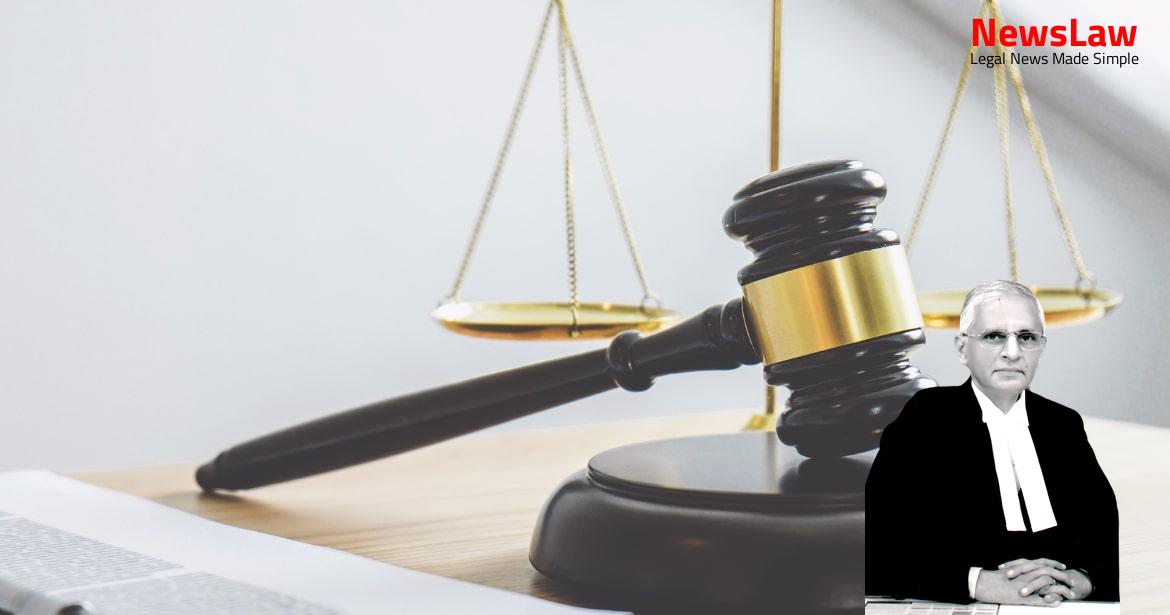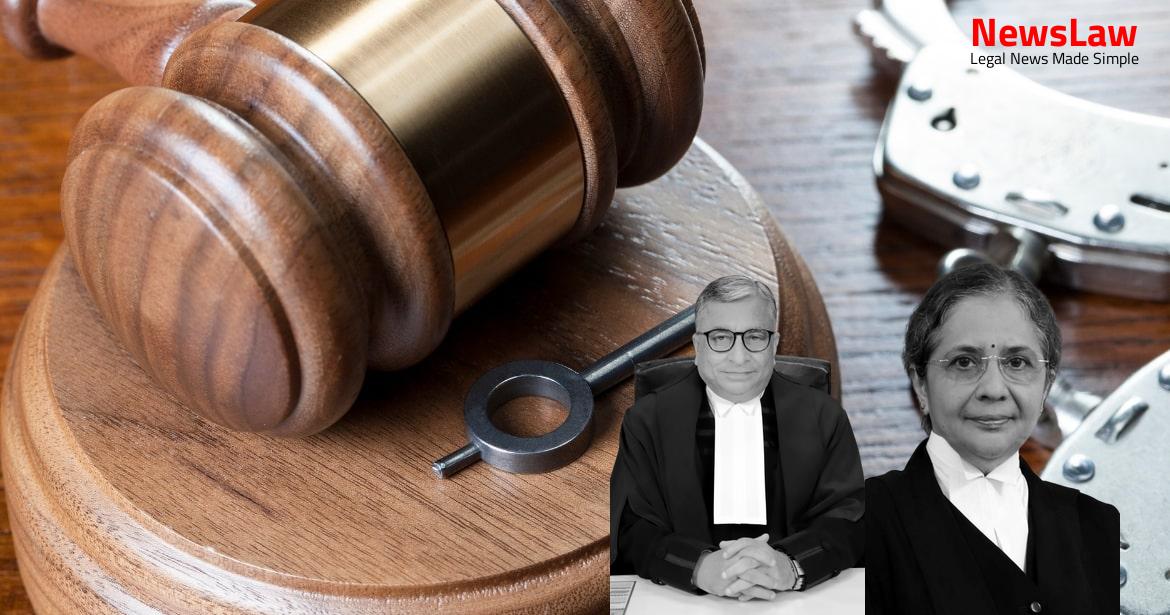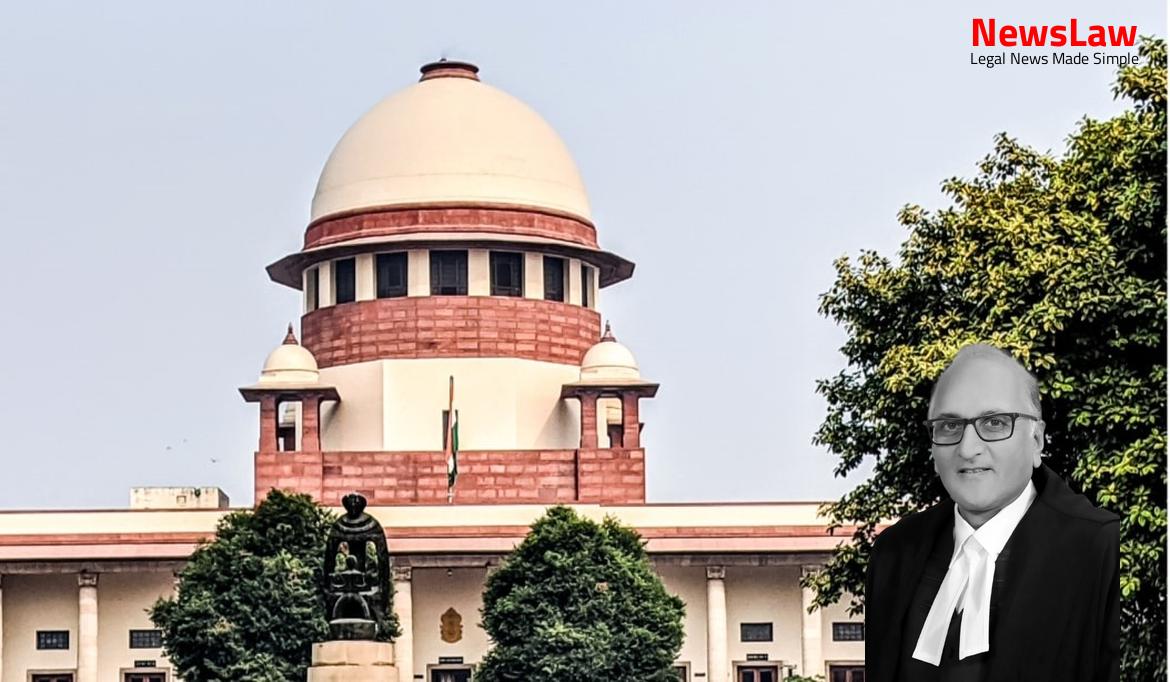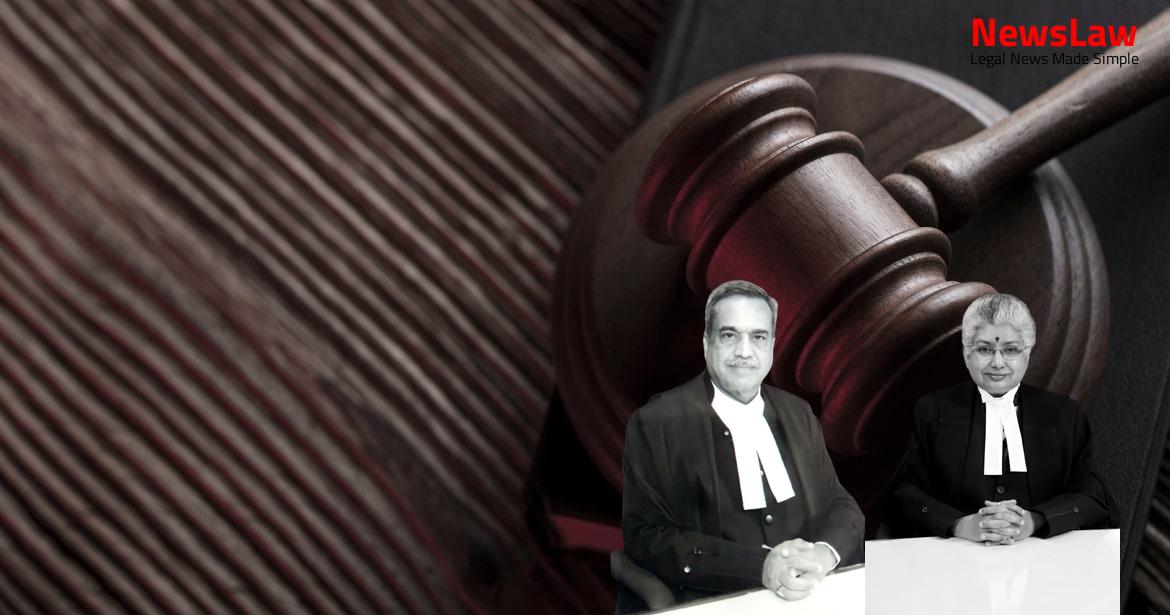The analysis of a property ownership dispute case underscores the critical role of thorough legal reasoning by the court. Emphasizing the need for concrete evidence and documentation, the court’s focus on property identity and possession sheds light on the complexities of determining rightful ownership in legal disputes. This summary delves into the intricate legal analysis conducted by the court.
Facts
- Appellants-State of Telangana and District Collector are before the Court assailing a judgment passed by the High Court in CCCA No.22/1999
- The suit involves adjacent properties in Survey No.129/56 and Survey No.129/73
- The trial court’s judgment was set aside by the High Court and the matter was remitted for fresh consideration
- The suit was initially dismissed in 1982 and the appellants were defendants No.1 and 2
- Plaintiffs claim the land is private and constructed a studio over it
- Trial court framed six issues for consideration which led to another dismissal in 1998
- Defendants filed a written statement disputing the claims of the plaintiffs
- Partners in the business ‘Bhagyanagar Studio’ claim ownership of specific portions of the land in Banjara Hills, Hyderabad
- The High Court, through its judgment dated 01.04.2021, allowed the appeal and set aside the judgment and decree dated 10.11.1998 passed by the V Senior Civil Judge, City Civil Court, Hyderabad in O.S. No.609/1981.
- As a result, the suit was decreed in favor of the respondents in the main appeal, declaring them as owners and restraining the appellants from interfering with their possession.
- The High Court overturned the decision of the trial court and decreed the suit in favor of the respondents.
Also Read: Supreme Court Upholds Rejection of Plaint Under Order VII Rule 11 of CPC: A Critical Analysis
Issue
- The issues in the case were initially framed to determine if the suit was bad for misjoinder or non-joinder of parties, and if the suit was maintainable in law.
- Eventually, the issues were recast to focus on whether the plaintiffs proved their possession and title to the suit schedule property.
- The specific points considered were whether the plaintiffs established their possession of the property on the date of the suit, and if they were able to prove their title and the identity of the property.
Also Read: Validity of Debt and Enforcement of Section 138 NI Act
Arguments
- In the instant case, the defendants are appealing, claiming that the suit is barred by time due to being filed beyond the limitation period.
- The defendants’ senior counsel argued that the issue of limitation can be raised at the appellate stage, citing relevant case laws.
- The plaintiffs’ senior counsel countered by asserting that the Limitation Act, 1963 applies, with a three-year period for obtaining a declaration of rights.
- Documents presented in court detailed land extent and requested allotment, raising questions about ownership and possession.
- The plaint alleged government interference with plaintiff’s possession of the land, highlighting a property dispute.
- Counsel for both parties referenced legal precedents to support their stance on the commencement of the limitation period.
- The dispute centers around the title and identity of property Survey No.129/56, with the plaintiff claiming ownership.
- The plaintiffs’ possession and enjoyment of the land beyond the statutory period are cited as evidence of adverse possession and rightful ownership.
- The defendants’ counsel brought additional documents to support their case, aiming to strengthen their argument.
- The Trial Court’s finding regarding the property identity issue remains undisturbed, leading to no need for interference.
- Ultimately, the suit is focused on obtaining a declaration of title and property identity within a specified survey number.
- The suit filed on 22.06.1981 was beyond the limitation period of three years as the cause of action occurred on 06.08.1977.
- The defendants contended that the suit was bad for non-joinder of proper and necessary party and was not maintainable.
- The government claimed that the suit land was situated between the plaintiff’s land and was not allowing the plaintiff to carry on construction work.
- The defendants denied that the suit schedule property is part of land bearing Survey No.129/56, stating it is government land bearing Survey No.403.
- They accused the plaintiffs of attempting to grab a portion of the valuable government land situated between Survey No.129/56 and Survey No.129/73.
- Letters and notices issued in 1978 and 1979 by the plaintiffs and the revenue authorities were referenced, indicating uncertainty about property measurements and identification.
Also Read: Enlargement on Bail in Illegal Mining Case
Analysis
- The Trial Court and the High Court analyzed the evidence presented by both parties to determine the identity and ownership of the disputed property.
- The plaintiff claimed that the property purchased by them was contiguous with another property on its western side, while the defendants argued that government land existed between the two properties.
- The High Court criticized the defendants for not producing original documents and emphasized the relevance of letters written by the plaintiffs to authorities regarding the disputed land.
- The issue of possession was also raised, with the High Court faulting the Trial Court for not properly considering the evidence of adverse possession.
- The debate centered around whether the property purchased by the plaintiffs was actually part of the specified survey number, requiring thorough documentation from the plaintiffs to establish their claim.
- The defendants attempted to introduce additional documents, but the courts did not allow it due to the timing and context of their submission.
- The High Court’s judgment was noted to have veered off track, not fully addressing the key issue of property identity and ownership as required in the case.
- Overall, the analysis highlighted the need for concrete evidence and documentation to determine the rightful ownership and boundaries of the disputed property.
- The court rejected the application made under Order 41 Rule 27 of C.P.C.
- The High Court then used the documents to draw adverse inferences against the defendants.
- Reference was made to cases such as Wadi Vs. Amilal & Others (2015) 1 SCC 677 and Adil Jamshed Frenchman (Dead) by Lrs Vs. Sardar Dastur Schools Trust & Others (2005) 2 SCC 476.
- The mutation proceedings and assessment for tax have not been evidenced.
- Opinion regarding the correctness of the allotment of 298 sq. yards is left open for consideration by competent authorities.
- The judgment of the High Court cannot be sustained, and the Trial Court’s judgment is to be restored.
- Observations on allottee’s rights and mesne profits being payable are set aside.
- Relief sought based on title cannot be granted if the identity of the property is not established despite the purchase claimed under a registered sale deed.
- Trial Court’s decision in this regard is justified.
Decision
- The judgment dated 10.11.1998 passed by the V Senior Civil Judge, City Civil Court, Hyderabad in O.S. No.609 of 1981 is restored.
- Pending application, if any, shall stand disposed of.
- The judgment dated 01.04.2021 passed by the High Court for Telangana at Hyderabad in CCCA No.22 of 1999 is set aside.
- The parties shall bear their own costs.
- The appeals are allowed.
Case Title: PRINCIPAL SECRETARY REVENUE DEPARTMENT STATE OF TELANGANA Vs. B. RANGASWAMY (DIED) BY LRS. (2022 INSC 686)
Case Number: C.A. No.-004669-004669 / 2022



